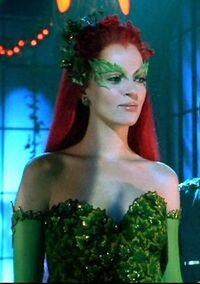
The Color Wheel
The 5 colors relate to each other in different ways. The "Color Wheel" (pictured)

shows this by showing Friendly colors next to each other and Rival colors across from each other.
(For example, White is allied with Blue and Green, while it Rivals Black and Red.)
White/Black[]
White values community, while Black only values itself, creating a massive ideological schism. Most White/Black

Magneto serves as a good example of a White/Black character
characters are simply hypocrites, claiming to work towards a greater good while reaping more benefits for themselves than others. They may also simply be overzealous, using Black methods to achieve White goals. They may be an evil bastard with fantastic publicity, or a visionary working towards Utopia through shocking and horrible means.
Black/Green[]
Green is the color of life, while Black is the color of death. Together they represent a cycle of life, death, and rebirth. Black/Green often views itself as a "recycler" using the dead as fertilizer to

Poison Ivy is an example of a Black/Green villain
nurture new life. Green/Black creatures can be unholy abominations, Green's large monsters imbued with Black's unholy energy, or they can be caregivers, monitoring the cycle of life and death and admiring its complexity. Black/Green organizations often intersect between Black's selfishness and Green's love of community, viewing themselves and their allies as one entity, an entity that deserves all the power it can reap. Black/Green can value the more unsavory parts of nature, such as insects, molds, and dangerous diseases.
Green/Blue[]
Blue values progress, while Green values the status quo and the natural. But they both agree in the value of evolution. Green may not appreciate Blue's methods but values its ability to grant powerful new ways

Bruce Banner is an example of a Green/Blue character
to smash and destroy. Both value learning, and can use spells in order to ready and improve themselves. Blue also readily explores the forbidden secrets Green hides, discovering natural occurences that can lead to wild and powerful effects. Green/Blue factions are often obsessed with manipulating nature into being more and more powerful. Green/Blue character often experiment on themselves in order to become stronger, faster, and smarter. Some Green/Blue entities may often seem virus like, attempt to assert their control over others in order to improve them.
Blue/Red[]
Blue cares little for emotion, while Red values it dearly. This conflict is often overshadowed by their mutual love of flashy, powerful spells. Blue has tricks to weaken and bewilder its enemies, while Red has lightening and fire to beat them down. These can often be hard to handle together, Blue's flashier spells can be hard to cast due to their high costs, while Red's spells can often have drawbacks in exchange for massive power. Both colors value manipulating and using the elements. At its core Blue/Red is for progress for its own sake, and for the thrill of discovery.

Indiana Jones is a good example of a Blue/Red hero
Red/White[]
White values order, while Red values freedom. White finds Red selfish, while Red finds White as a dictator. Red/White is a color pair of determination, White is willing to work hard to achieve its goals, and Red is willing to break rules for the fun of it. Red/White can be territorial waronger at its worst. But at its best it can maintain order while allowing others privacy and freedom.

Worf is a good example of a Red/White hero

V uses White methods to achieve Red ends